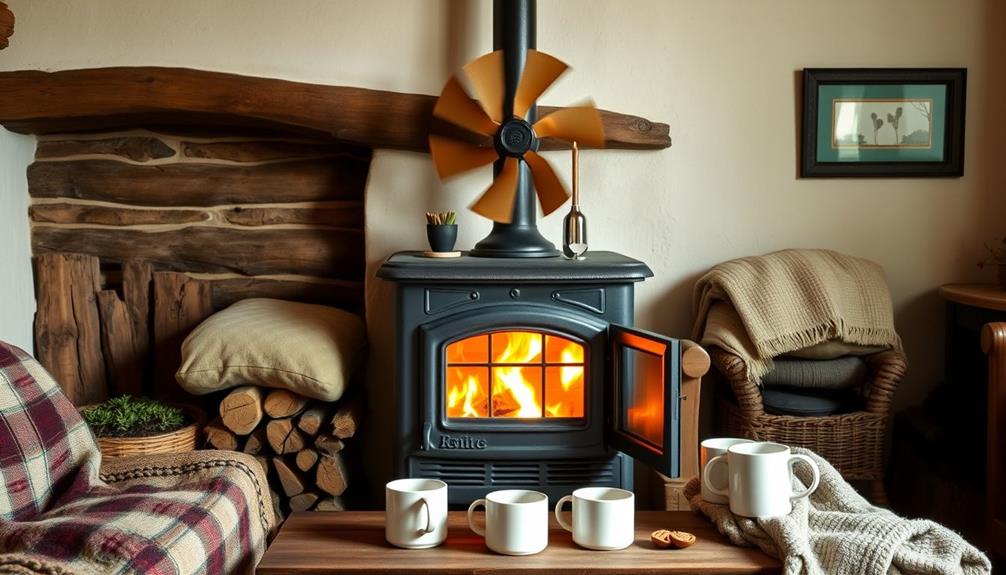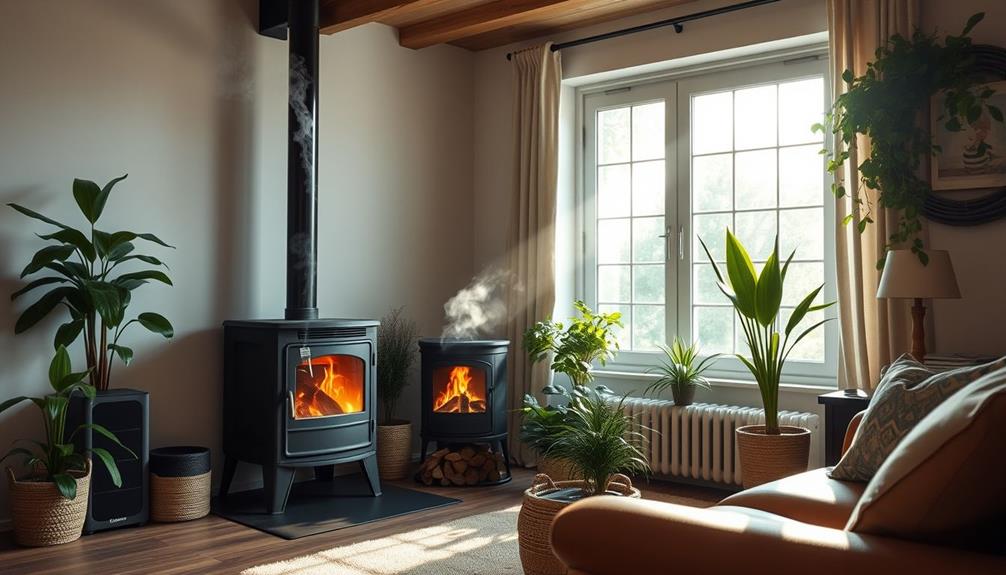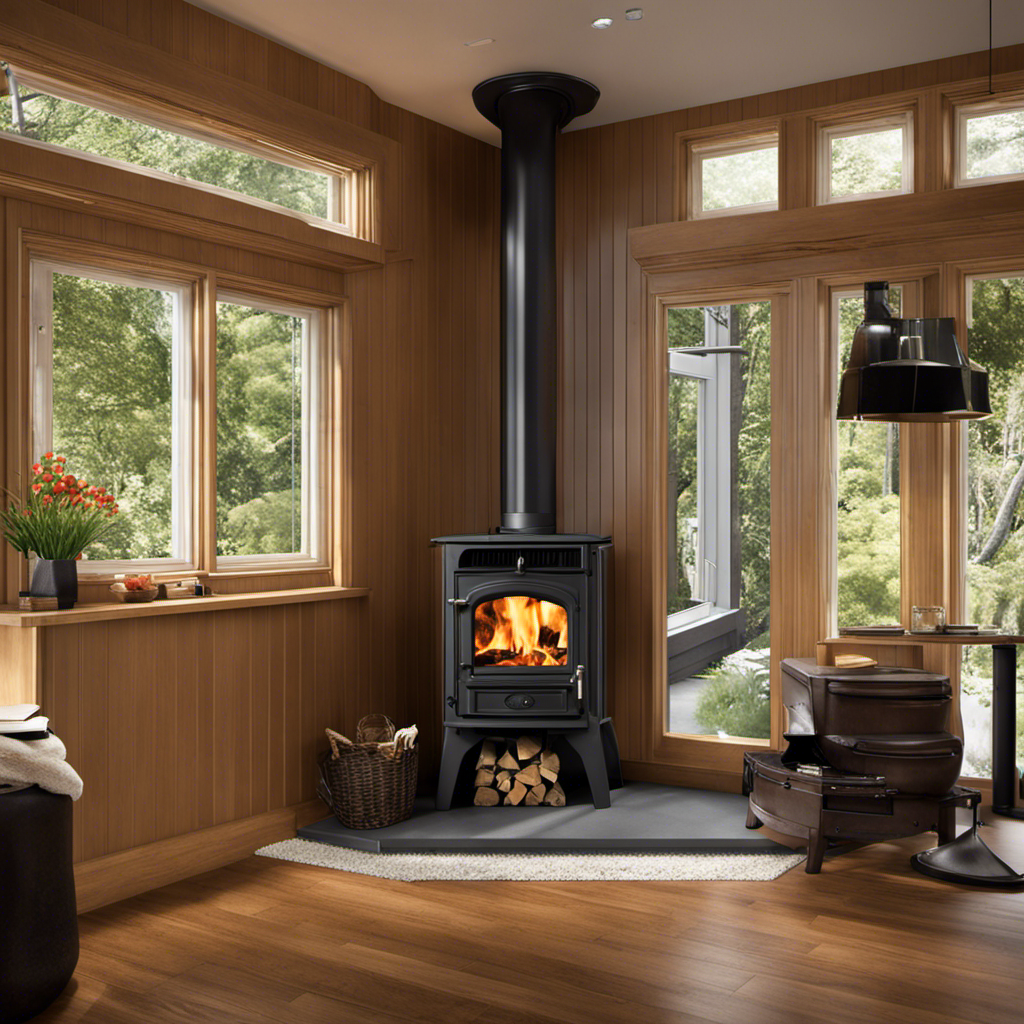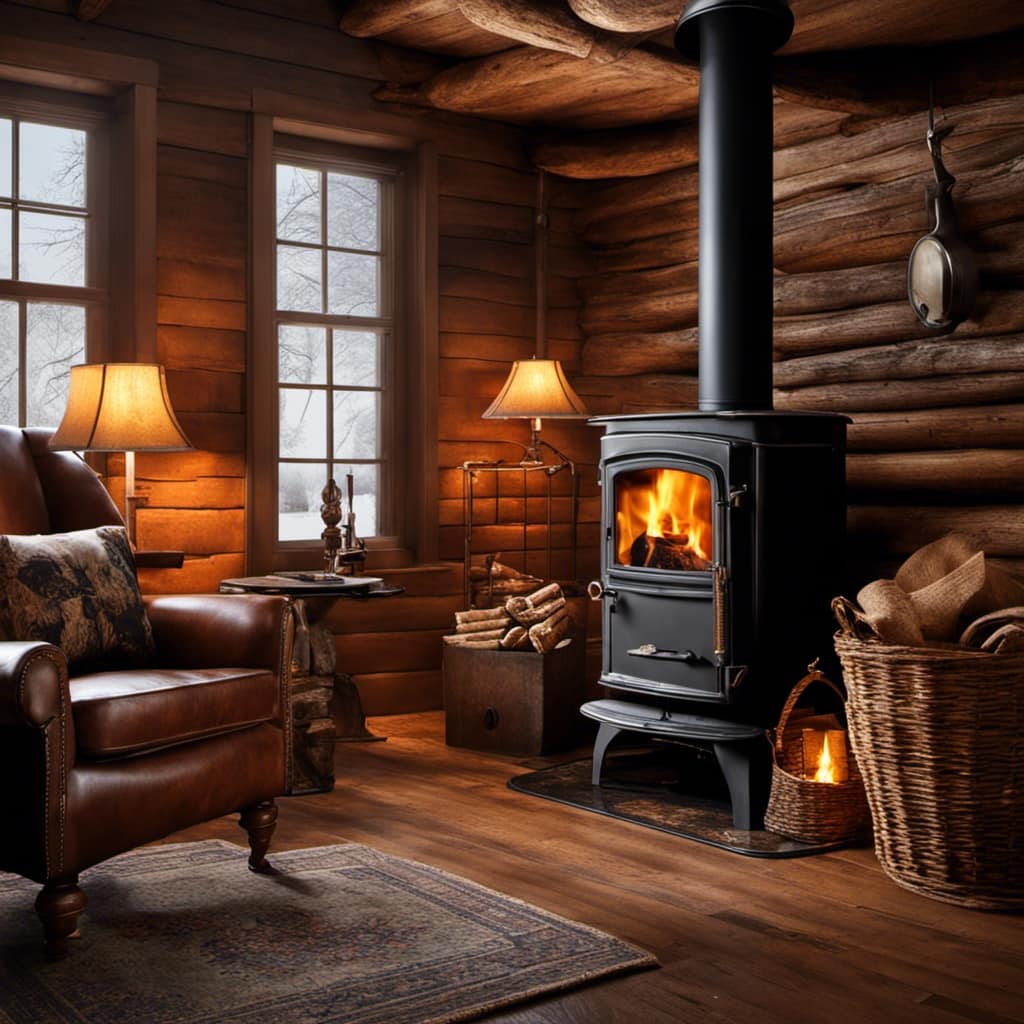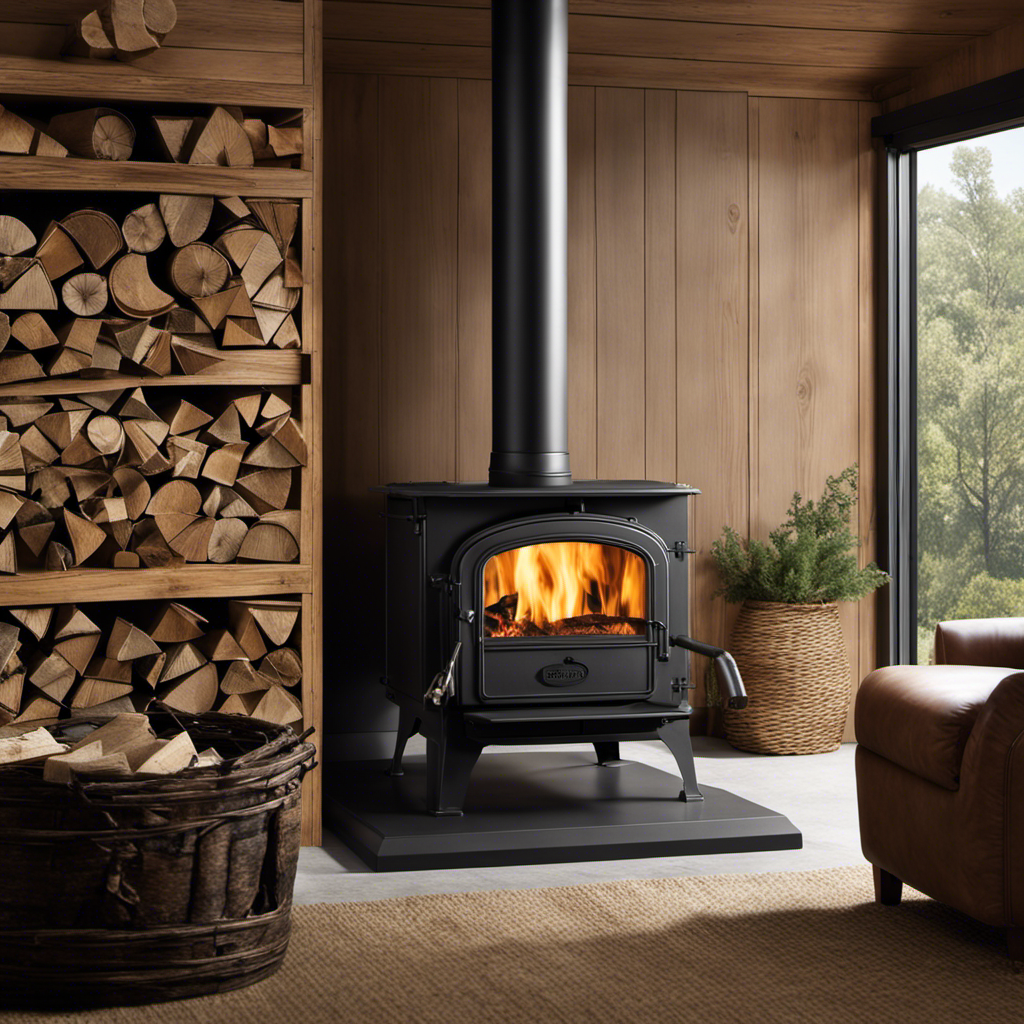Wood stove fans can definitely help distribute heat throughout your space, creating a more comfortable environment. These fans improve warmth by circulating air and eliminating cold spots, which is especially beneficial in smaller areas. Users have reported significant improvements in heat distribution, with some models boosting efficiency by around 30%. They operate quietly and don't require electricity, making them an eco-friendly choice. While performance can vary based on your stove and layout, you'll find that most users appreciate the added warmth. If you're curious about the best models and features available, there's plenty more to explore.
Key Takeaways
- Wood stove fans improve heat distribution by circulating warm air, reducing cold spots for a more comfortable living space.
- Users report an average effectiveness increase of about 30% in heat distribution, especially in smaller areas.
- Fans operate quietly, enhancing the cozy atmosphere without disrupting peaceful sleep during nighttime use.
- Some users experience minimal differences in larger spaces, highlighting placement and room layout as crucial factors.
- Long-term reliability varies among models, with user reviews emphasizing the importance of durability and performance consistency.
Overview of Wood Stove Fans
When it comes to optimizing your wood-burning stove, wood stove fans are a game changer. These fans enhance the effectiveness of your stove by improving warmth distribution and minimizing cold spots in your room.
Ideal for creating a cozy atmosphere, they can be particularly beneficial during chilly evenings spent indoors. Available in various models, like two-blade and four-blade designs, many users prefer the four-blade models for their superior performance in circulating warm air ideal for relaxation and exploration.
Using a Peltier device, wood stove fans activate automatically when your stove reaches a specific temperature, meaning you don't need to fuss with batteries or a power supply.
This energy-saving feature allows the fan to begin heat transfer as soon as it's needed, making it a smart addition to your heating setup.
Benefits of Heat Distribution

Many homeowners find that using a wood stove fan greatly enhances heat distribution in their living spaces. By helping to circulate the heat, these fans effectively push warm air around the room, eliminating cold spots and creating a more comfortable environment.
With a more even heat distribution, you won't have to deal with the discomfort of hot zones near the stove and chilly corners elsewhere. Additionally, utilizing a wood stove fan can complement the efficiency of your heating system, much like heat pumps can improve overall energy use in homes, especially when considering advancements in heat pump technology.
Furthermore, studies indicate that using a stove fan can lead to annual wood savings of about 1.5%, allowing you to enjoy more warmth without greatly increasing your wood consumption. The proper air circulation facilitated by these eco fans also plays an essential role in maximizing the efficiency of your heating system by reducing heat loss through walls, ceilings, and windows.
Keep in mind that the effectiveness of a wood stove fan can vary based on factors like the type of stove you have, your home's layout, and insulation. Understanding these elements can help you better assess how much a fan can benefit your specific situation.
Ultimately, many homeowners appreciate the enhanced heat distribution provided by wood stove fans, making their living spaces cozier and more inviting.
User Experiences and Feedback
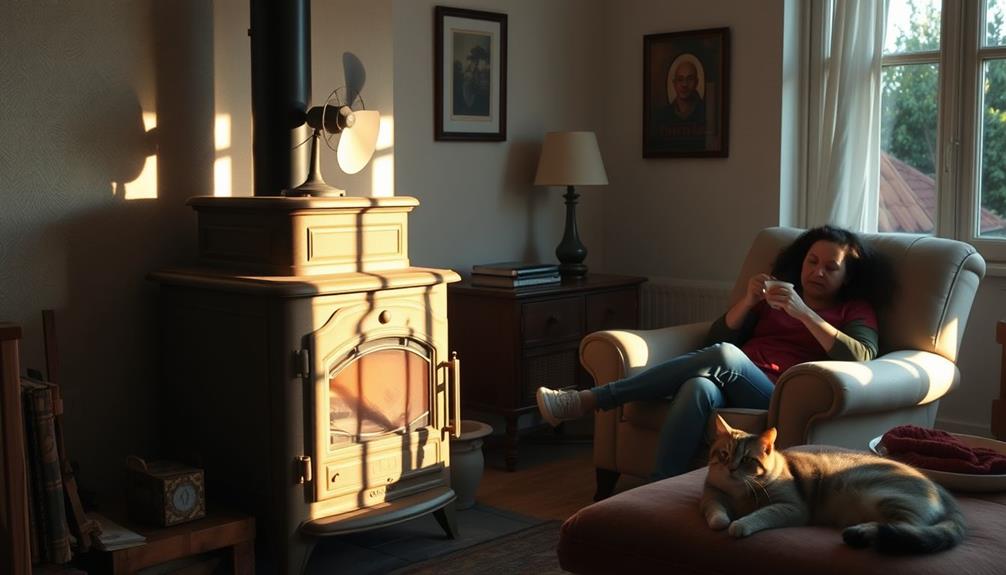
Over time, user experiences with wood stove fans have shown a range of outcomes, reflecting individual needs and home setups. Many people report that these fans considerably improve heat distribution, particularly in smaller spaces. You might find that the fan effectively circulates warm air, making your room feel cozier.
Additionally, similar to how a self-cleaning mechanism in vacuums helps maintain performance, many users appreciate that wood stove fans often operate quietly and efficiently. However, in larger areas, users often notice only minimal differences in air movement and overall warmth.
Most reviews emphasize the fans' quiet operation, allowing you to enjoy their benefits without disruptive noise during the night. This feature is a big plus for those who value peaceful sleep. While the fans can enhance heat circulation, some users mention that the effect on wood consumption is minimal, meaning you won't necessarily burn less wood.
However, it's worth noting that durability can vary. Some customers have expressed concerns about the long-term reliability of their fans, suggesting that performance may decline over time.
Performance Comparisons

Typically, performance comparisons reveal that wood stove fans can enhance heat distribution by about 30%, making them particularly effective in heating areas up to 250 square feet. This improvement in circulating warm air not only keeps your space cozy but can also lead to annual wood savings of approximately 1.5%.
Some fans even come equipped with smart features for better efficiency and performance, similar to the benefits of modern technology in garage door openers. However, the effectiveness of your stove fan depends greatly on the type of stove you have. Four-blade models tend to outperform two-blade designs when it comes to air circulation.
User feedback highlights a mixed bag of results; while many find that their fans do a great job of providing even heat distribution, others see minimal air movement, reflecting the variability in individual setups.
Proper placement of the stove fan is essential, too—positioning it off to the side or back of the stove can greatly enhance its performance and efficiency in heat circulation. Additionally, the temperature differential in your room can impact how well the fan operates.
If you're considering a stove fan, keep these performance comparisons in mind to make certain you choose a model that meets your specific heating needs.
Installation and Safety Tips
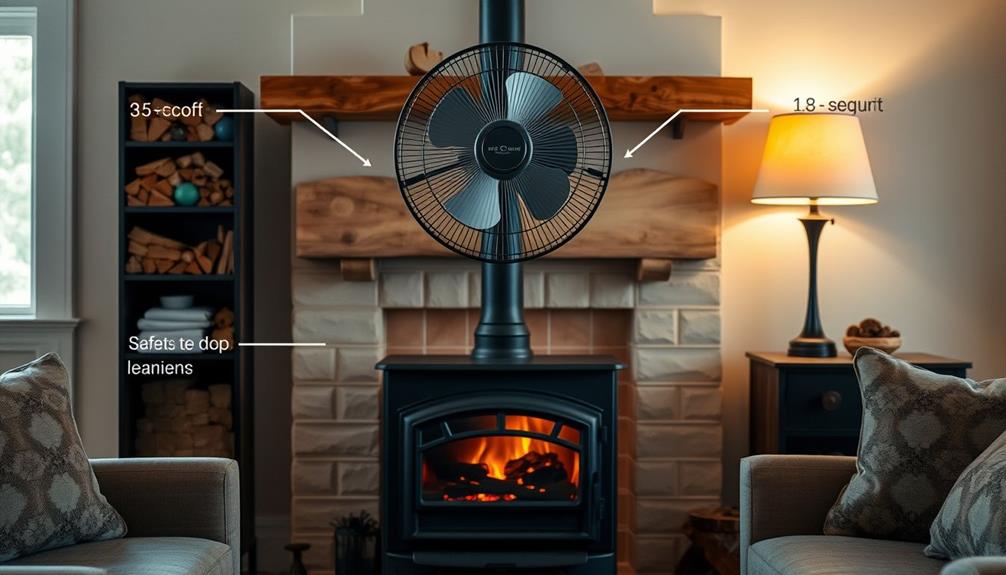
Installing a wood stove fan correctly is crucial for maximizing its effectiveness and guaranteeing safety. First, place the fan on a flat, stable surface atop the stove, preferably on the side or back. This positioning maximizes airflow and helps distribute heat around your space.
Always handle the fan by its metal handle on top to prevent any damage during installation. To enhance your home environment, consider how essential items for a home cleaning kit can complement the warmth from your wood stove by keeping your space tidy and inviting.
To guarantee safety while the fan works, verify that the flue remains hot during operation. This helps prevent back drafting and maintains peak combustion efficiency. Additionally, consider installing carbon monoxide (CO) alarms nearby to monitor air quality and guarantee the safe operation of your wood stove and fan.
Regularly check for any obstructions around the fan, and maintain a safe distance from flammable materials. This simple precaution prevents fire hazards and enhances the overall safety of your heat source.
Cost Analysis of Stove Fans
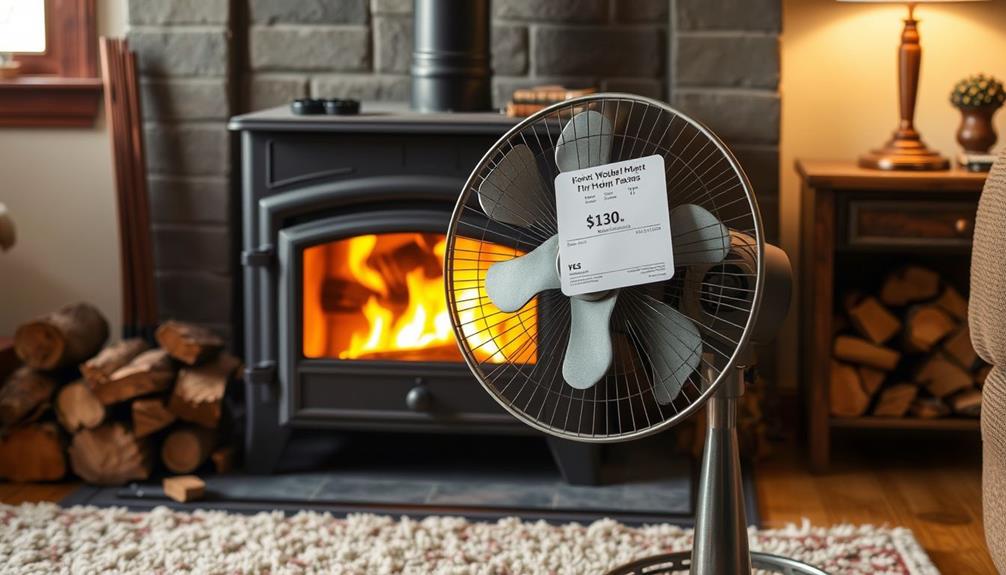
When evaluating a stove fan, you'll find that prices range from $39 to $300, depending on the features and efficiency offered. Conducting a cost analysis is vital, as the initial price tag isn't the only factor to weigh. Higher-end models often provide better heat distribution and improved heating efficiency, which can lead to considerable long-term savings on wood consumption.
Additionally, it's important to research reputable Gold IRA providers to guarantee you're making informed decisions regarding investments, similar to how one should carefully assess stove fans. Investing in a quality stove fan can reduce your annual wood usage by approximately 1.5%, making it a worthwhile investment for many homeowners.
However, keep in mind that the effectiveness of stove fans can vary based on your home layout, stove type, and insulation. This variation can considerably affect the overall cost-benefit ratio, so it's vital to evaluate how these factors apply to your situation.
While some users report minimal differences in wood consumption, they often find that the increased comfort and warmth justifies the initial expense. Ultimately, you should assess not just the upfront cost but also the potential long-term savings on fuel and enhancements in heating efficiency before making your decision.
Recommendations for Best Models
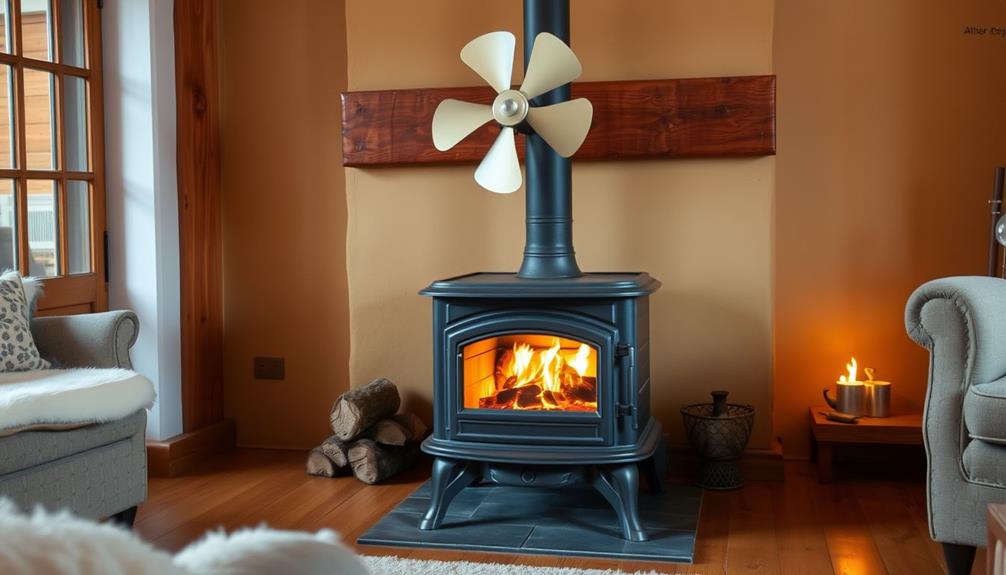
For those looking to enhance their heating experience, selecting the right stove fan can make a significant difference. A heat powered stove fan helps in circulating warm air and spreading the heat more evenly throughout your space, resulting in better heat distribution. Here are some top recommendations:
| Model | Key Features | Price Range |
|---|---|---|
| Voda Stove Fan | Four blades, eco-friendly packaging | $39 – $50 |
| Caframo Eco Fan | Quiet operation, boosts efficiency by 30% | $39 – $50 |
| 5-Blade Fan | Silent at 1 dB, significant warmth boost | $39 – $50 |
Each of these fans operates without electrical power, making them an affordable option. When choosing a model, consider where you place it; positioning it off to the side or back of the stove optimizes airflow and prevents overheating. By selecting one of these models, you'll likely notice an impressive increase in the amount of air circulated, ensuring your home stays cozy and warm throughout the winter.
Frequently Asked Questions
Do Wood Stove Fans Really Work?
Do wood stove fans really work? Yes, they can improve heat distribution by enhancing air circulation. However, their effectiveness depends on factors like your stove type, room layout, and how you position them during use.
What Is the Best Way to Circulate Heat From a Wood Stove?
To circulate heat from your wood stove effectively, position a heat-powered fan nearby. This fan boosts airflow, enhances heating efficiency, and helps eliminate cold spots, making your space warmer and more comfortable without using electricity.
Does a Blower on a Wood Stove Make a Difference?
Yes, a blower on your wood stove really makes a difference. It circulates warm air, improving heating efficiency and comfort. Just guarantee it's placed correctly to maximize airflow and avoid disrupting natural convection.
How Efficient Is a Wood Stove Fan?
Ever wondered how much warmer your room could feel? A wood stove fan can boost efficiency, improving heat distribution considerably. Proper placement and stove conditions matter, so you'll enjoy a cozy atmosphere without wasting wood.
Conclusion
In the grand theater of home heating, wood stove fans play a supporting role that can't be overlooked. They help distribute warmth, transforming your space into a cozy refuge, much like the embrace of an old friend on a chilly evening. While individual experiences may vary, many users find these fans worth their weight in gold. So, if you're looking to elevate your comfort, investing in a quality stove fan might just be the plot twist your winter needs.

